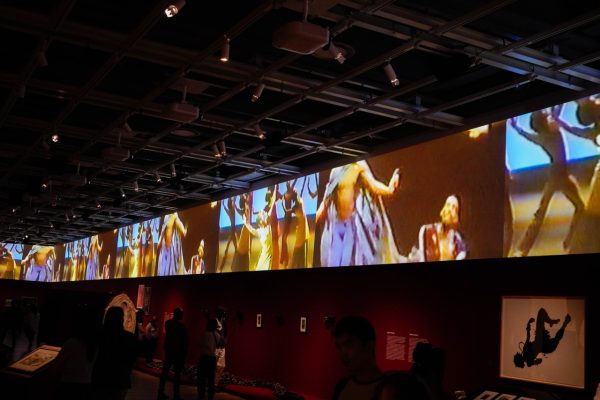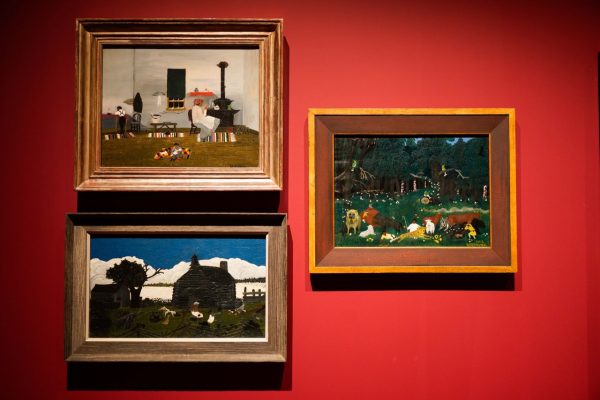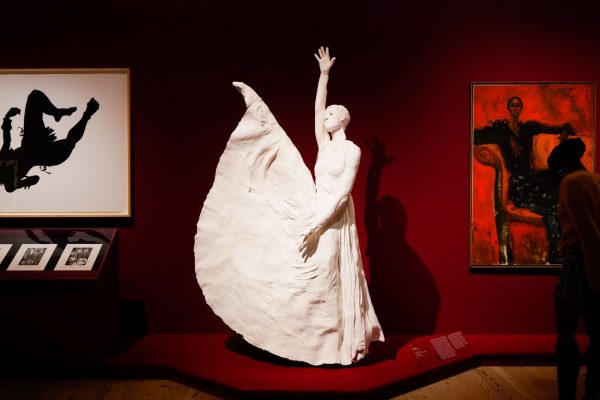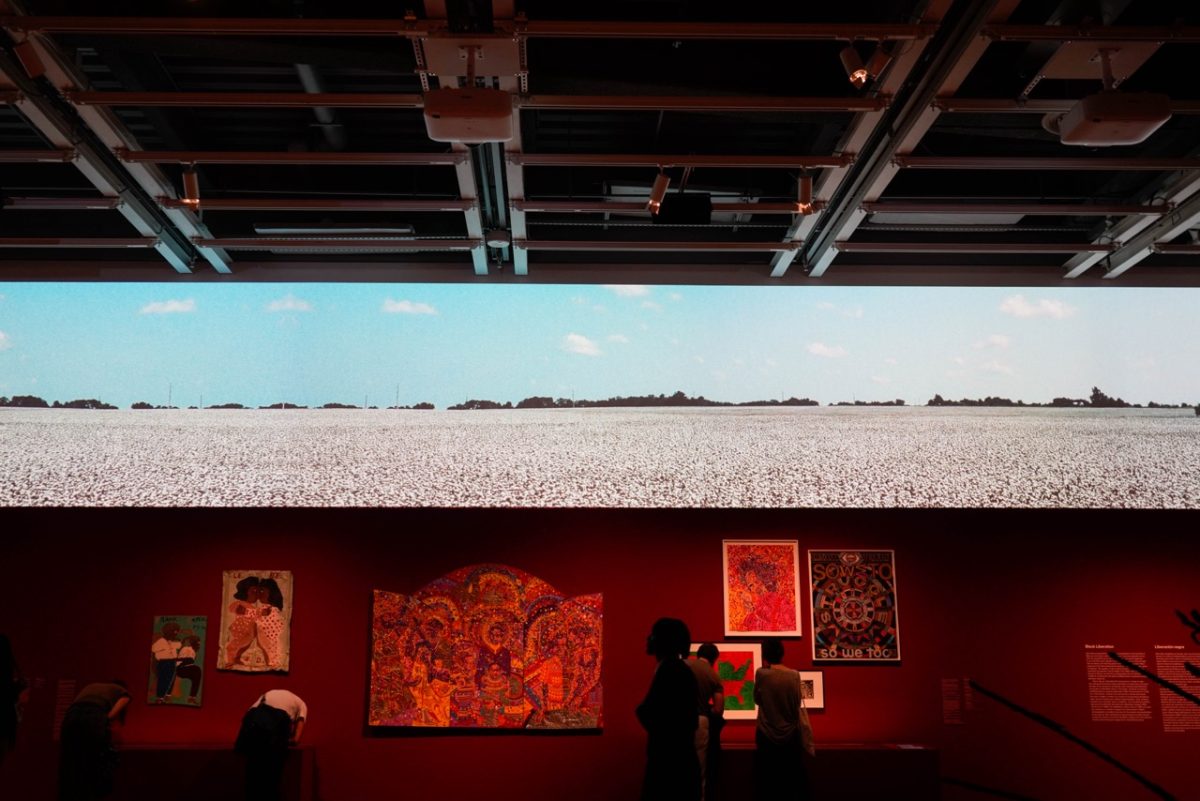A sea of red and notes of musical blues fill the fifth floor of the Whitney Museum of American Art. Curtains drawn across the windows create a theatrical feel. Large screens mounted high on the walls display a montage of dancers, surrounding viewers as they gaze upward and around at the exhibition. Multimedia installations, historical paintings and intricate sculptures fill the space.
A history of movement and dance comes alive in the Whitney Museum’s latest exhibition, “Edges of Ailey,” which invites visitors to explore the innovative artistry and cultural significance of world renowned choreographer Alvin Ailey. Recognized as one of the most influential figures in modern dance, Ailey’s work reflects unique, avant-garde choreographies that blend personal, social and cultural influences.
The immersive gallery delves into the emotionally driven narratives that define Ailey’s legacy. Through a captivating blend of dance, visual art and audio-visual installations, the exhibition highlights Ailey’s ability to redefine modern dance and create a space for marginalized voices.

Ailey’s experiences as a gay Black man growing up in racially segregated Texas shaped his artistic vision, as he experienced social injustice and discrimination in the ’50s and ’60s. Ailey often used these experiences as sources of inspiration, with his work often exploring themes of suffering, resilience and finding his identity. He sought to express the Black experience in the ’50s and ’60s through dance by blending elements of jazz, blues and spirituals. Through his dance company, Ailey challenged artistic expression and paved the way for a new generation of creators while also providing a space for Black dancers.
“Edges of Ailey” features personal and creative archival material from Ailey’s career along with media collaborations with over 80 artists, some of whom Ailey references in his choreography notebooks. Paintings and sculptures throughout the exhibition highlight Black artists and center themes of Black spirituality, migration and liberation.
One collection by American painter Horace Pippin features genre paintings, a type of art that depicts scenes of everyday life. Consisting of three oil on fabric paintings, the collection illustrates daily aspects of Black life and comments on labor before, during and after the American Civil War. One painting in the series, “Cabin in the Cotton,” illustrates a group of people laboring in seemingly endless rows of cotton plants. Pippin’s work demonstrates the historical context from which Ailey drew inspiration, providing a more holistic look into Ailey’s artistic development.

Among the most impressive art in the exhibition is a sculpture titled “Dear Mama” by Karon Davis. “Dear Mama” portrays American dancer, choreographer and director emerita of Alvin Ailey American Dance Theater, Judith Jamison. Jamison quickly gained international recognition after joining the AADT in 1965. Over the next 15 years, Ailey created some of his most enduring roles for her, most notably the masterpiece solo “Cry,” which is the dance depicted in “Dear Mama.” The life-sized plaster sculpture features the dancer kicking one leg up and extending her right arm out, with defined arm muscles, a sharp toe point and a skirt that appears to freeze in midair. The details of the sculpture are incredible, from the intricate folds of the dancer’s skirt to Jamison’s placid facial expression.

The exhibition’s video installation continuously projects clips of Ailey’s rehearsals and performances along with personal messages addressed to Ailey from his performers. Each aspect of the exhibit emphasizes the pure love that Ailey put into his work, a testament to his resilience.
Accompanying the installation, the AADT will be in residence for one week each month during the run of the exhibition until Feb. 9, 2025. Tickets for “Edges of Ailey” are free for NYU students, and tickets for the performance program must be purchased separately.
Contact Maya Santiago at [email protected].
























































































































































